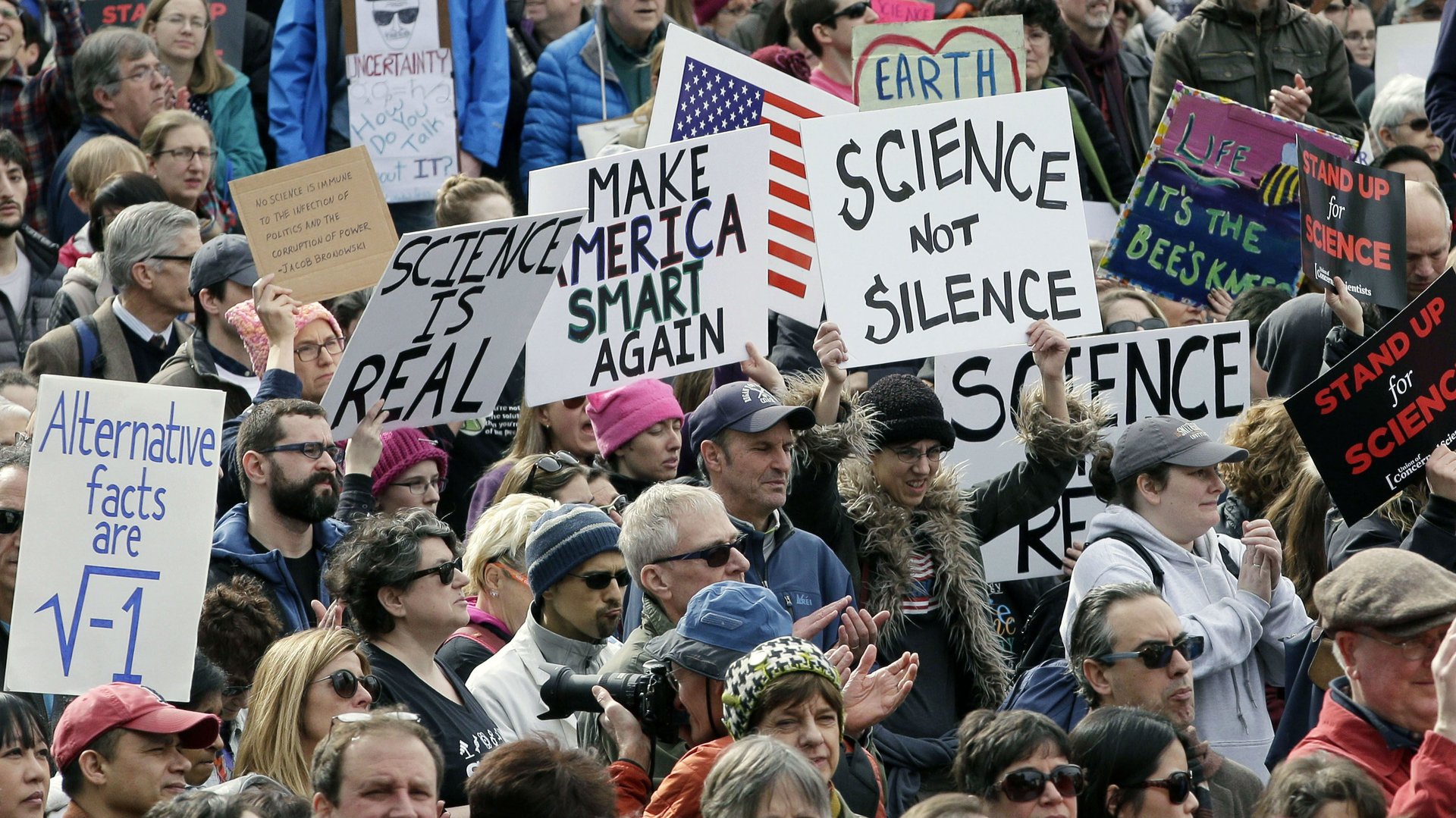The March for Science isn’t about what you think it’s about
On Saturday, April 22—Earth Day—thousands of scientists and science enthusiasts will take to the National Mall in Washington, DC for the March of Science.


On Saturday, April 22—Earth Day—thousands of scientists and science enthusiasts will take to the National Mall in Washington, DC for the March of Science.
The Facebook group dedicated to the march was created days after US president Donald Trump’s inauguration, and despite being invitation-only has since gathered more than 838,000 members. There are also 500 simultaneous marches that will take place worldwide, and you can even virtually attend if crowds aren’t your thing.
The idea for the march appeared to have developed in response to Trump’s blatant disregard for science. Generally, people seem to think the march is to support science as a discipline, which is certainly part of it. Included in the official mission of the march is that it “champions robustly funded and publicly communicated science as a pillar of human freedom and prosperity.”
Others—including local organizers—are taking this notion of science appreciation a step further, and calling for specific advocacy in opposition to the Trump administration. Part of the mission statement for the Denver, Colorado march, for example, is to “call…for policymakers to enact evidence-based policies in the public interest.” Ravi Valleti, a Bay Area actor who identifies as a futurist, said in a video for the San Francisco March that he’s marching because “we need to defending funding in science,” in. And the Sedona, Arizona march is called the “Women’s March for Earth and Science.”
But the organizers of the main event—the DC march— say it won’t take a political stance. In fact, it’s not really about policy at all. Instead, the march is meant to inspire scientists to step away from the bench and put themselves in elected positions to actually cause political change (and to invigorate science enthusiasts about this cause).
“Science is above politics,” says Shaughnessy Naughton, a chemist at Princeton University. “But politicians are not ashamed to muddle in science.” Scientists have to learn to communicate and advocate for the importance of their work in politics to protect it, Naughton says. In other words, they need to have a seat at the table.
Naughton herself ran for congressional office in Pennsylvania in both 2014 and 2016. Since then, she’s channeled her efforts into creating the non-profit 314 Action, which provides assistance for scientists who want to run for governmental offices. Although it was operational before the presidential election, Naughton says that since January 2017, interest has exploded. In that time, over 4,000 scientists have registered with the site, which likely represents a large portion of a small community.
“We are looking at the march as a starting point to energize the scientific community,” Naughton says. Hopefully, seeing a flood of support for research and facts will inspire other scientists to make their voices heard. Even if they don’t want to commit to running for office, Naughton says, scientists can still have an impact by being vocal about their work with their neighbors and communities to show them why science matters.
Without scientific research, there wouldn’t be vaccines, antibiotics, clean air and drinking water, cars, electricity—all aspects of modern life that benefit everyone, including people in positions of power who ignore its importance. Disregarding centuries evidence-based work is bad for the world, but indifference to science isn’t good enough—everyone should recognize what it’s done to improve lives around the globe, and support it moving forward.
A lot of scientists attending the march on Saturday would probably rather be back in their labs. Until recently, demonstrating for their relevance has been outside of their job description, and is undoubtedly beyond the realm of their comfort zones. But hopefully, the experience will be inspiring instead of draining.